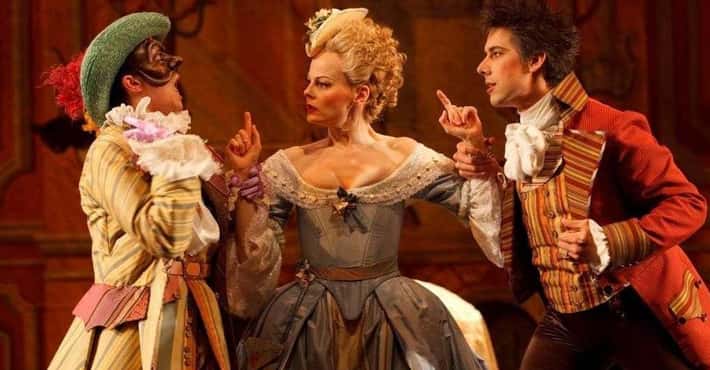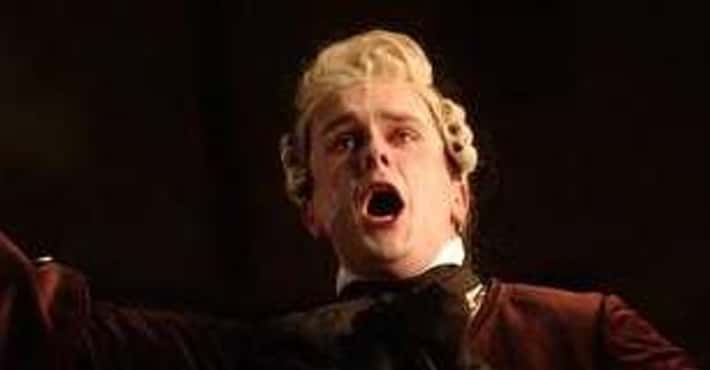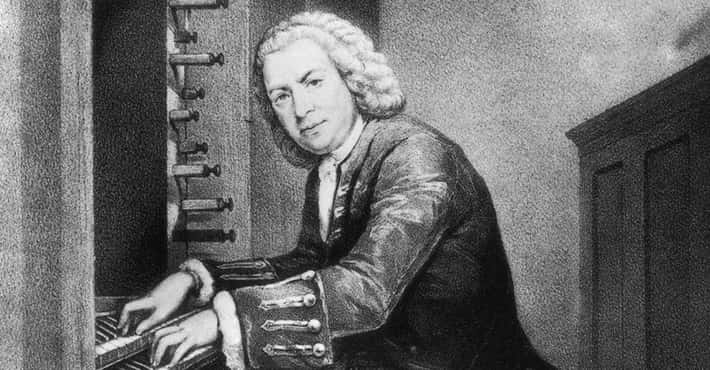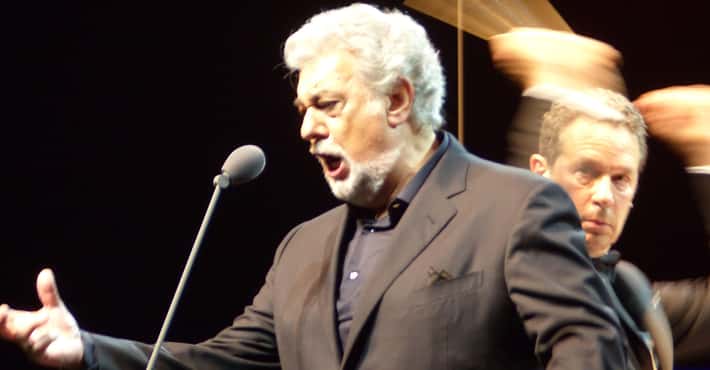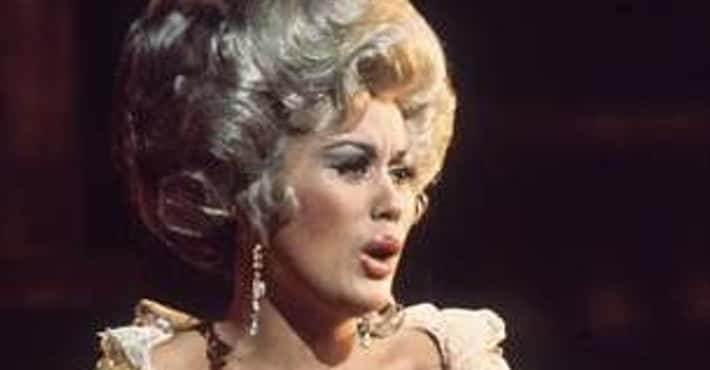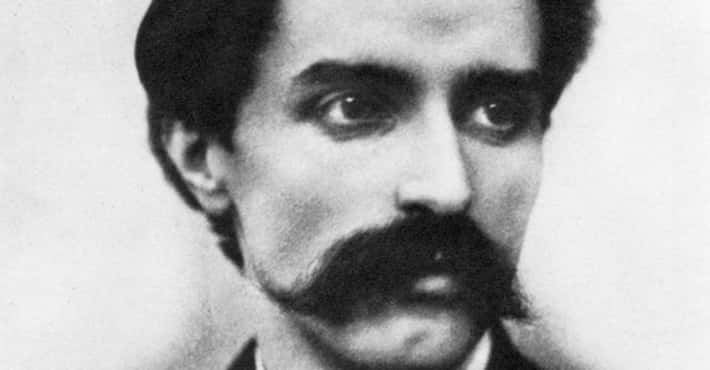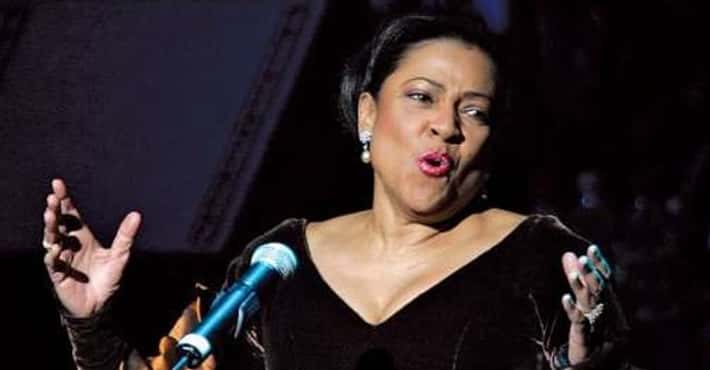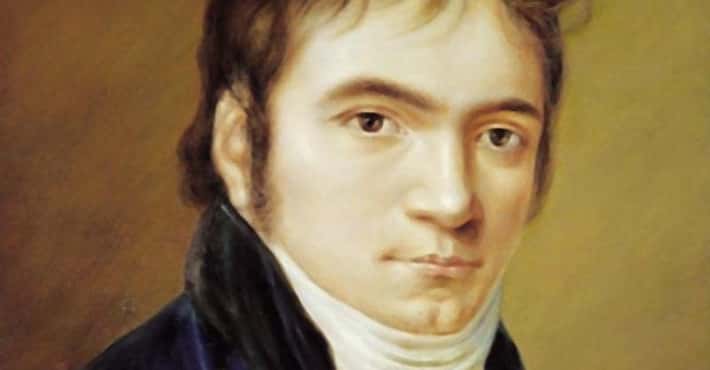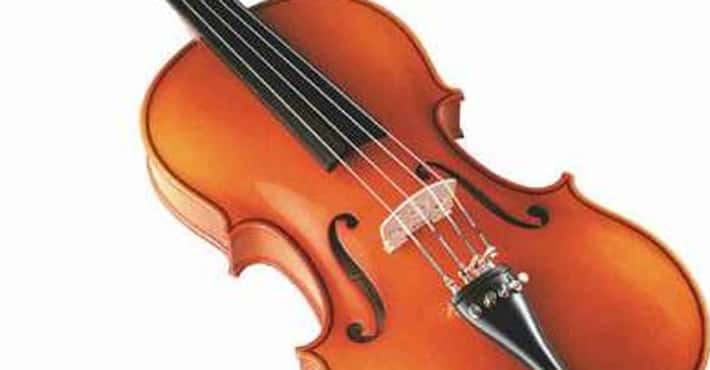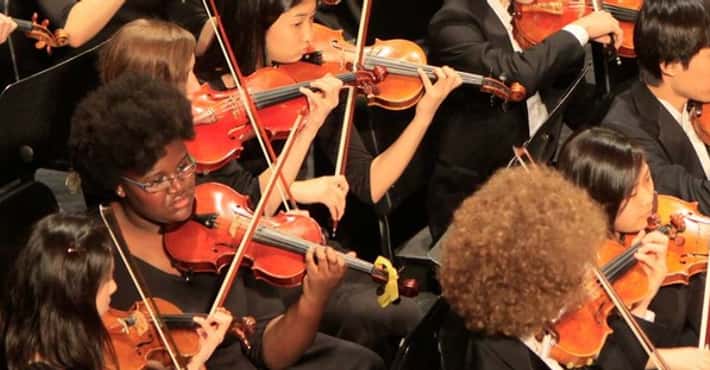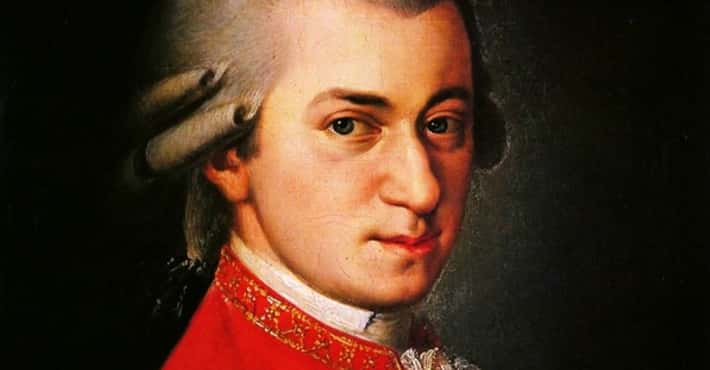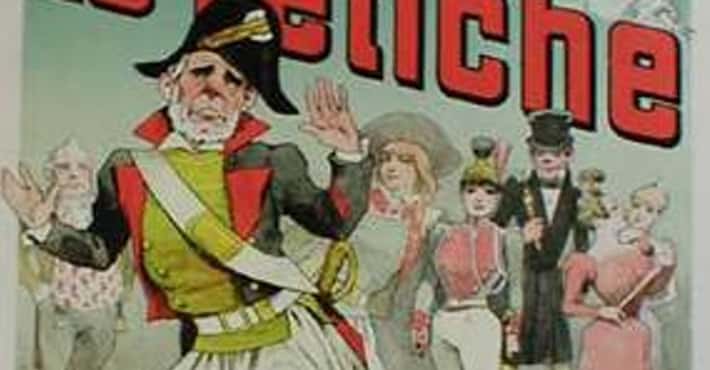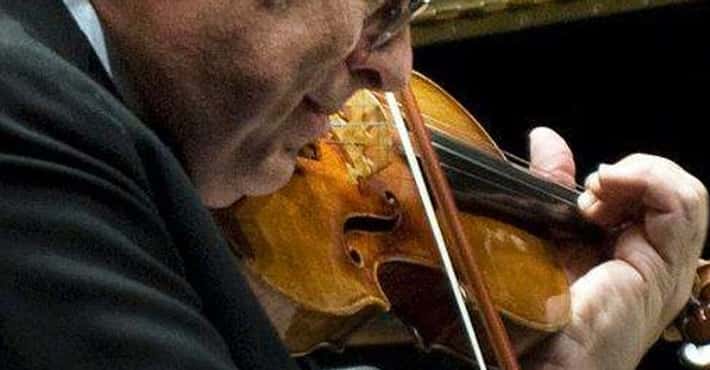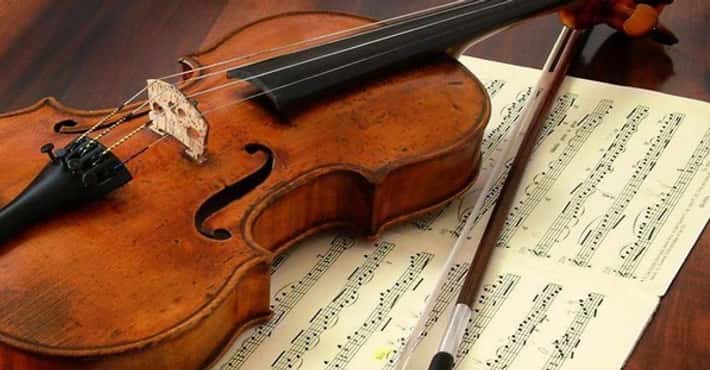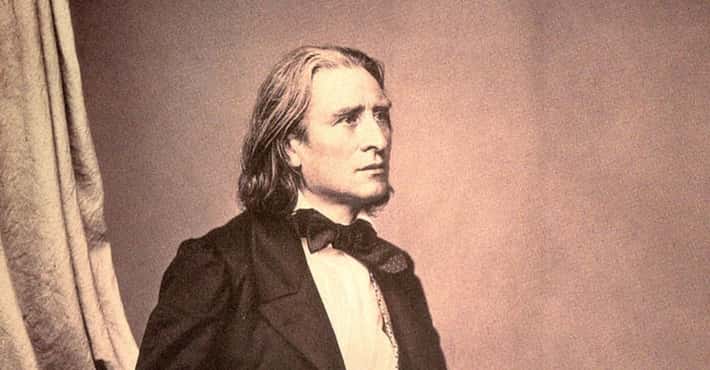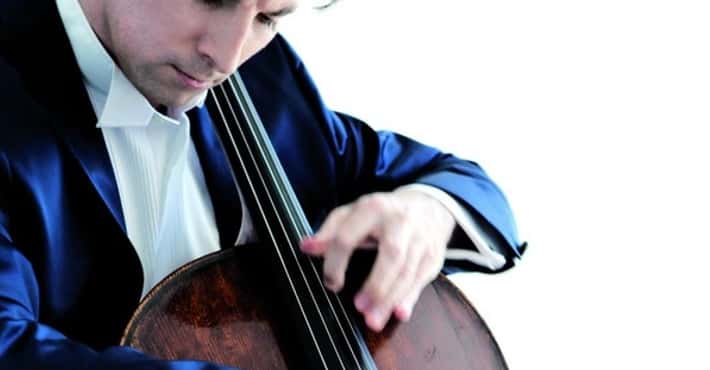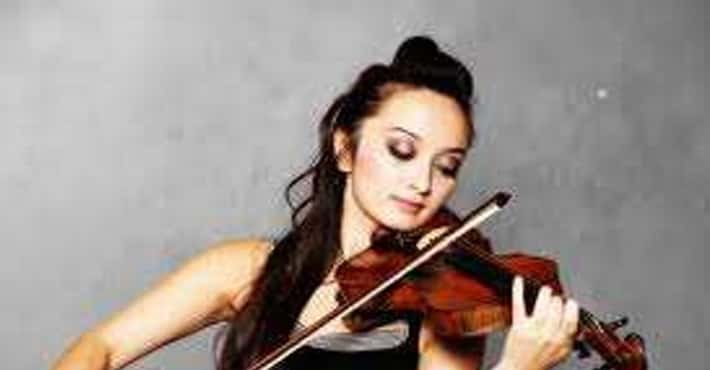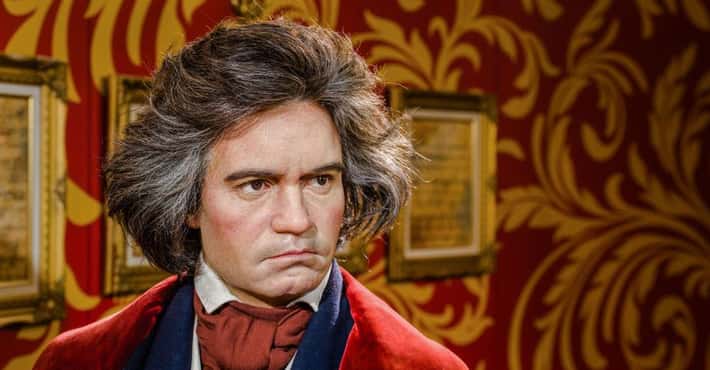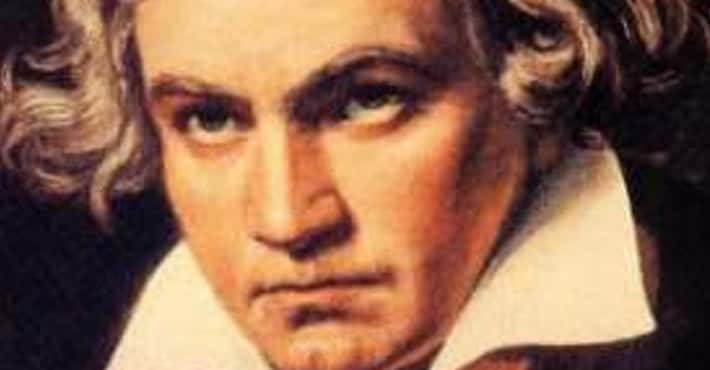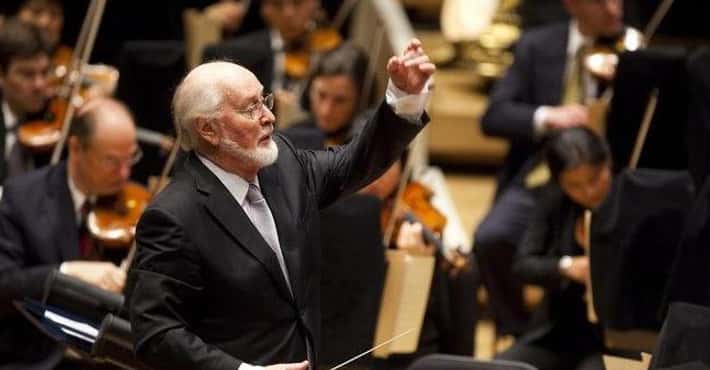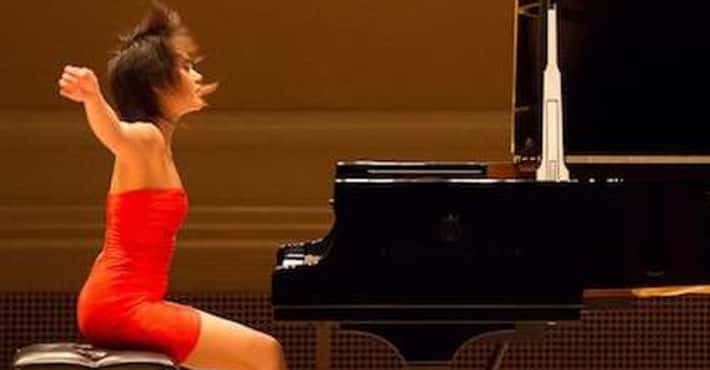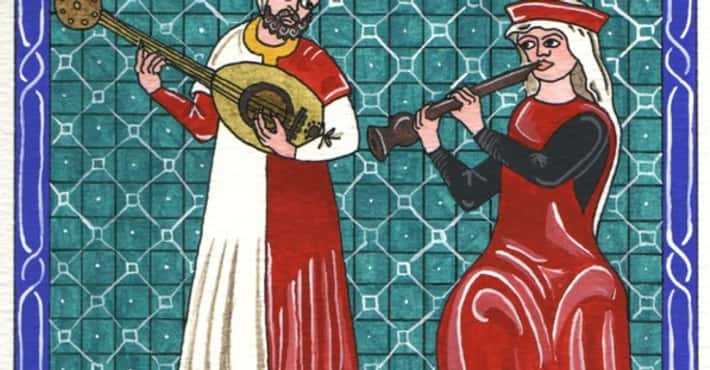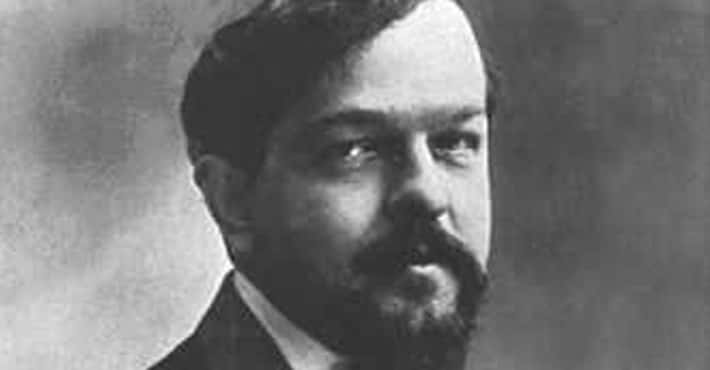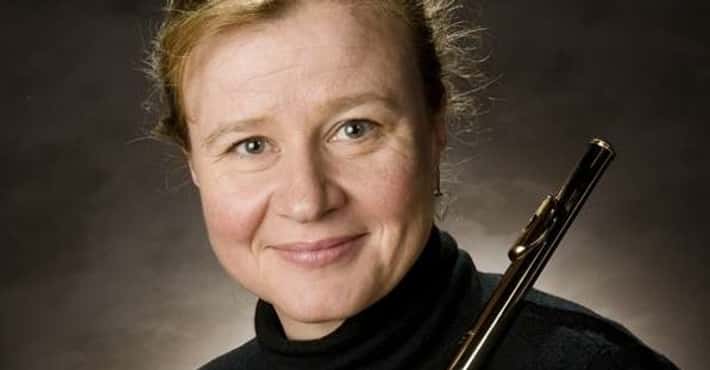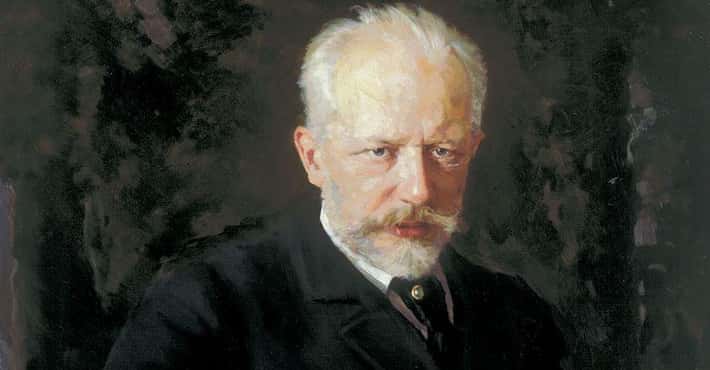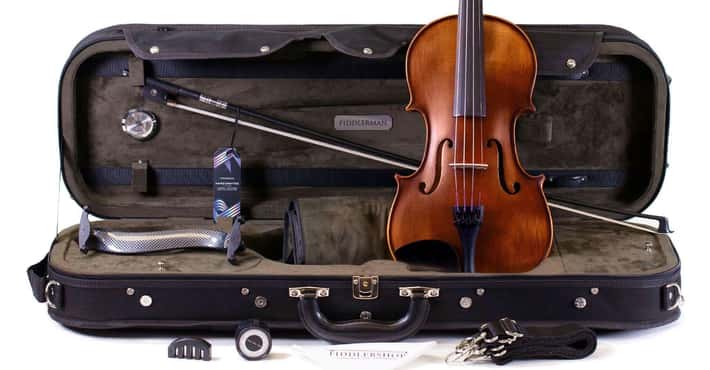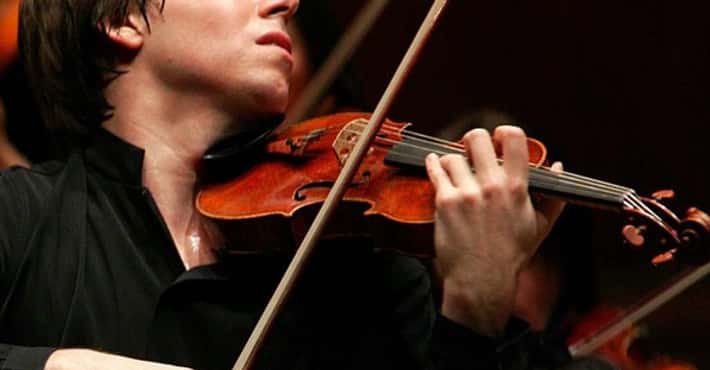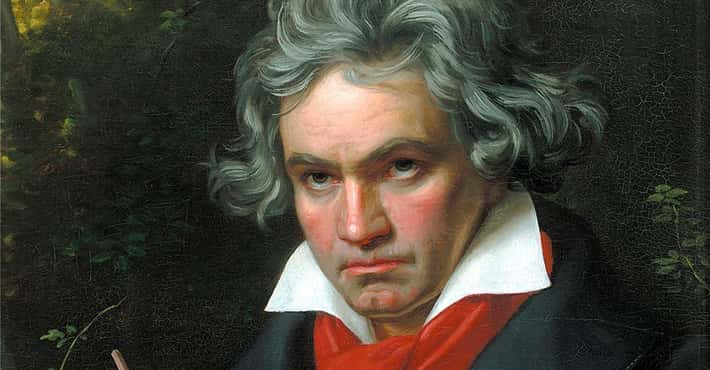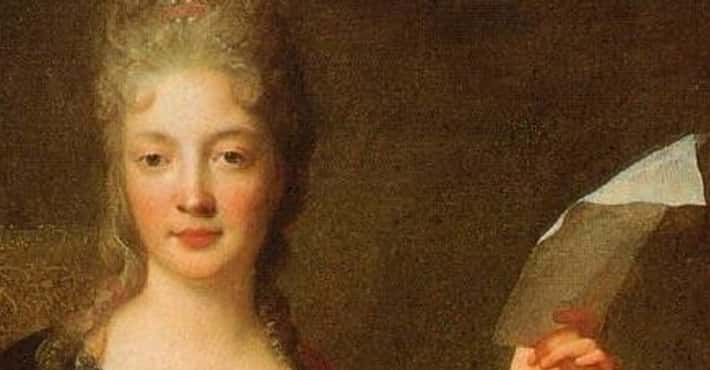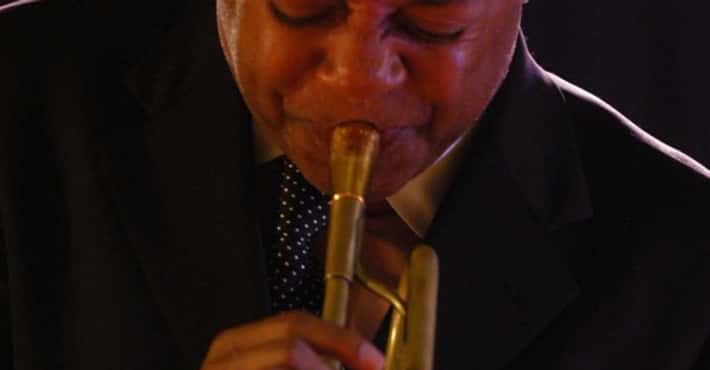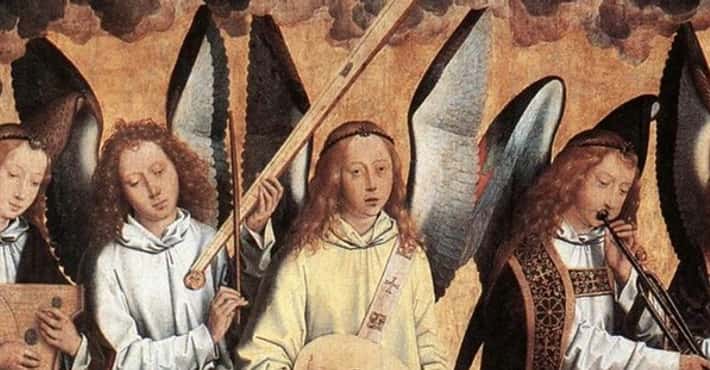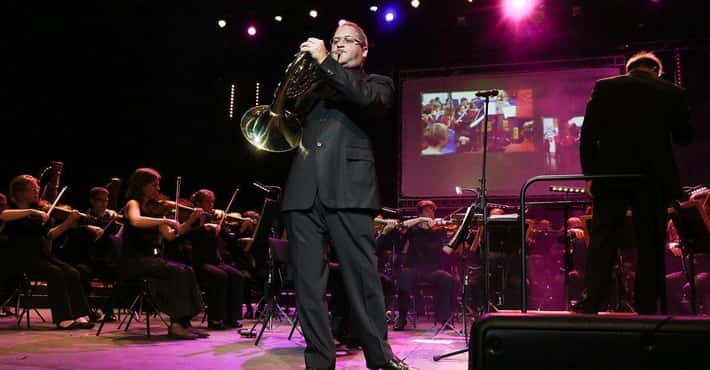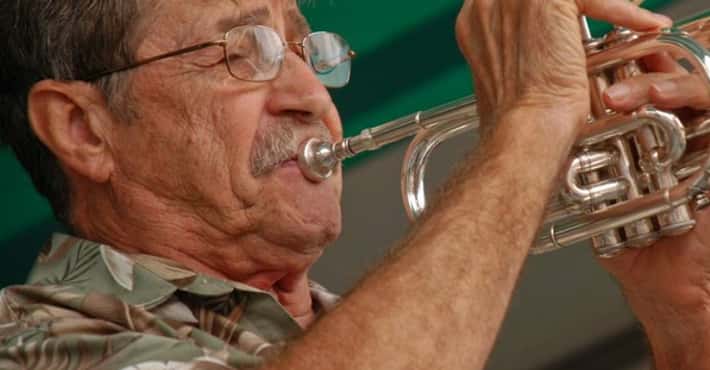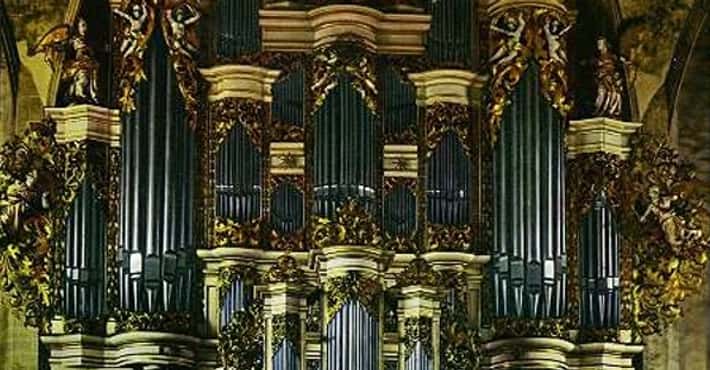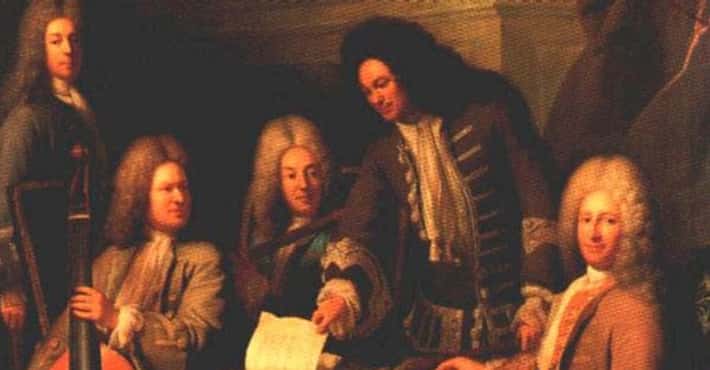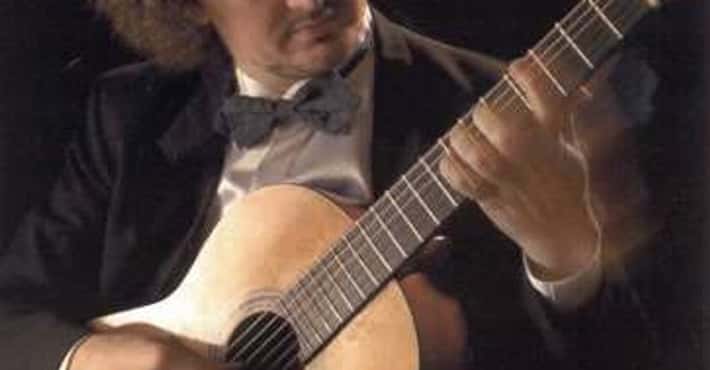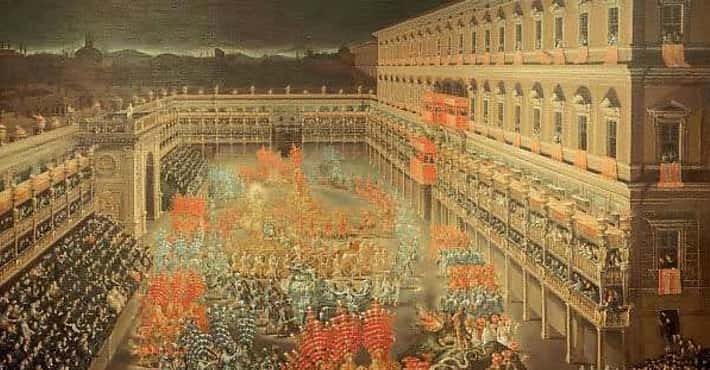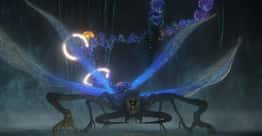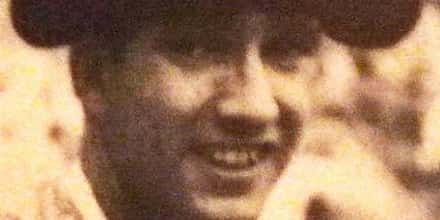List of Giuseppe Verdi Operas
- Aida, sometimes spelled Aïda, is an opera in four acts by Giuseppe Verdi to an Italian libretto by Antonio Ghislanzoni, based on a scenario often attributed to French Egyptologist Auguste Mariette, although Verdi biographer Mary Jane Phillips-Matz has argued that the scenario was actually written by Temistocle Solera. Aida was first performed at the Khedivial Opera House in Cairo on 24 December 1871, conducted by Giovanni Bottesini.
- Alzira is an opera in a prologue and two acts by Giuseppe Verdi to an Italian libretto by Salvadore Cammarano, based on the play Alzire, ou les Américains by Voltaire. The first performance was at the Teatro San Carlo, Naples, on 12 August 1845. The contemporary reviews were mixed, and the first run of the opera received only four further performances.
- Aroldo is an opera in four acts by Giuseppe Verdi to an Italian libretto by Francesco Maria Piave, based on and adapted from their earlier 1850 collaboration, Stiffelio. The first performance was given in the Teatro Nuovo Comunale in Rimini on 16 August 1857.
- Attila is an opera in a prologue and three acts by Giuseppe Verdi to an Italian libretto by Temistocle Solera, based on the 1809 play Attila, König der Hunnen by Zacharias Werner. The opera received its first performance at La Fenice in Venice on 17 March 1846. Ezio's act 2 aria of heroic resolution È gettata la mia sorte is a fine example of a characteristic Verdian genre, and it achieved fame in its own time with audiences in the context of the adoption of a liberal constitution by Ferdinand II. Other contemporary comment praised the work as suitable for the "political education of the people", while, in contrast, others criticised the opera as "Teutonic" in nature.
- Don Carlos is a five-act grand opera composed by Giuseppe Verdi to a French-language libretto by Joseph Méry and Camille du Locle, based on the dramatic play Don Carlos, Infant von Spanien by Friedrich Schiller. In addition, it has been noted by David Kimball that the Fontainebleau scene and auto da fé "were the most substantial of several incidents borrowed from a contemporary play on Philip II by Eugène Cormon". Given its premiere at the Salle Le Peletier on 11 March 1867, the opera's story is based on conflicts in the life of Carlos, Prince of Asturias, after his betrothed Elisabeth of Valois was married instead to his father Philip II of Spain as part of the peace treaty ending the Italian War of 1551–1559 between the Houses of Habsburg and Valois. It was commissioned and produced by the Théâtre Impérial de l'Opéra. When performed in one of its several Italian versions, the opera is generally called Don Carlo. The first Italian version given in Italy was in Bologna in March 1867. Revised again by Verdi, it was given in Naples in November/December 1872. Finally, two other versions were prepared: the first was seen in Milan in January 1884.
- Ernani is an operatic dramma lirico in four acts by Giuseppe Verdi to an Italian libretto by Francesco Maria Piave, based on the play Hernani by Victor Hugo. Verdi was commissioned by the Teatro La Fenice in Venice to write an opera, but finding the right subject took some time, and the composer worked with the inexperienced Piave in shaping first one and then another drama by Hugo into an acceptable libretto. As musicologist Roger Parker notes, the composer "intervened on several important points, insisting for example that the role of Ernani be sung by a tenor. Ernani was first performed on 9 March 1844 and it was "immensely popular, and was revived countless times during its early years". It became Verdi's most popular opera until it was superseded by Il trovatore after 1853. In 1904 it became the first opera to be recorded completely.
- Falstaff is an opera in three acts by the Italian composer Giuseppe Verdi. The libretto was adapted by Arrigo Boito from Shakespeare's The Merry Wives of Windsor and scenes from Henry IV, parts 1 and 2. The work, described by its creators as a commedia lirica, premiered on 9 February 1893 at La Scala, Milan. Verdi wrote Falstaff, which was the last of his twenty-eight operas, as he was approaching the age of eighty. It was his second comedy, and his third work based on a Shakespeare play, following Macbeth and Otello. The plot revolves around the thwarted, sometimes farcical, efforts of the fat knight, Sir John Falstaff, to seduce two married women for mercenary reasons. Boito persuaded Verdi out of retirement to compose the opera, which took the collaborators three years from mid-1889 to complete. Although the prospect of a new opera from Verdi aroused immense interest in Italy and round the world, Falstaff did not prove to be as popular as earlier works in the composer's canon.
- Giovanna d'Arco is an operatic dramma lirico with a prologue and three acts by Giuseppe Verdi set to an Italian libretto by Temistocle Solera, who had prepared the libretti for both Nabucco and I Lombardi. It is Verdi's seventh opera. The work partly reflects the story of Joan of Arc and appears to be loosely based on the play Die Jungfrau von Orleans by Friedrich von Schiller. After writing the music over the autumn and winter of 1844/45, Verdi's opera had its first performance at Teatro alla Scala in Milan on 15 February 1845.
- I due Foscari is an opera in three acts by Giuseppe Verdi to an Italian libretto by Francesco Maria Piave, based on a historical play, The Two Foscari by Lord Byron. After his success with Ernani, Verdi received a commission from Rome's Teatro Argentina and he went to work with Piave in considering two subjects, one of which eventually became this opera. I due Foscari was given its premiere performance in Rome on 3 November 1844 and was generally quite successful, although not on the scale of Ernani, which remained Verdi's most popular opera until Il trovatore in 1853. Today, Foscari is revived occasionally and its fortunes have been helped by the interest taken by tenor Plácido Domingo in singing baritone roles. He has already performed the role of the Doge in Los Angeles in 2012, in Valencia in early 2013, in Vienna and London in 2014.
- I Lombardi alla Prima Crociata is an operatic dramma lirico in four acts by Giuseppe Verdi to an Italian libretto by Temistocle Solera, based on an epic poem by Tommaso Grossi, which was "very much a child of its age; a grand historical novel with a patriotic slant". Its first performance was given at the Teatro alla Scala in Milan on 11 February 1843. Verdi dedicated the score to Maria Luigia, the Habsburg Duchess of Parma, who died a few weeks after the premiere. In 1847, the opera was significantly revised to become Verdi's first grand opera for performances in French at the Salle Le Peletier of the Paris Opera under the title of Jérusalem.
- I masnadieri is an opera in four acts by Giuseppe Verdi to an Italian libretto by Andrea Maffei, based on Die Räuber by Friedrich von Schiller. As Verdi became more successful in Italy, he began to receive offers from other opera houses outside the country. The London impresario Benjamin Lumley had presented Ernani in 1845 and, as a result of its success, commissioned an opera from the composer which became I masnadieri. It was given its first performance at Her Majesty's Theatre on 22 July 1847 with Verdi conducting the first two performances. While reasonably successful there and in Italy up to the mid-1860s, the opera disappeared for about 90 years until revived in 1951. It has been revived from time to time in the 21st century.
- Il Corsaro is an opera in three acts by Giuseppe Verdi, from a libretto by Francesco Maria Piave, based on Lord Byron's poem The Corsair. The first performance was given at the Teatro Grande in Trieste on 25 October 1848.
- Il trovatore is an opera in four acts by Giuseppe Verdi to an Italian libretto largely written by Salvadore Cammarano, based on the play El trovador by Antonio García Gutiérrez. It was Gutiérrez's most successful play, one which Verdi scholar Julian Budden describes as "a high flown, sprawling melodrama flamboyantly defiant of the Aristotelian unities, packed with all manner of fantastic and bizarre incident." The premiere took place at the Teatro Apollo in Rome on 19 January 1853, where it "began a victorious march throughout the operatic world," a success due to Verdi's work over the previous three years. It began with his January 1850 approach to Cammarano with the idea of Il trovatore. There followed, slowly and with interruptions, the preparation of the libretto, first by Cammarano until his death in mid-1852 and then with the young librettist Leone Emanuele Bardare, which gave the composer the opportunity to propose significant revisions, which were accomplished under his direction. These revisions are seen largely in the expansion of the role of Leonora.
- Jérusalem is a grand opera in four acts by Giuseppe Verdi. The libretto was to be an adaptation and partial translation of the composer's original 1843 Italian opera, I Lombardi alla prima crociata. It was the one opera which he regarded as the most suitable for being translated into French and, taking Scribe's advice, Verdi agreed that a French libretto was to be prepared by Alphonse Royer and Gustave Vaëz, who had written the libretto for Donizetti's most successful French opera, La favorite. The opera received its premiere performance at the Salle Le Peletier in Paris on 26 November 1847.
- La battaglia di Legnano is an opera in four acts, with music by Giuseppe Verdi to an Italian-language libretto by Salvadore Cammarano. It was based on the play La Bataille de Toulouse by Joseph Méry, later the co-librettist of Don Carlos. Written as a commission from the Teatro Argentina in the "beleaguered republic" of Rome while the composer was still living in Paris, he traveled to Rome in late 1848 to prepare the opera for its first performance, which was given on 27 January 1849. Musicologist Roger Parker describes the première as "a clamorous success, with the entire final act encored" and the audience wild with enthusiasm. He goes to add that act 4 was encored at every performance of the run. However, we learn elsewhere that the opera failed in its 1850 production in Genoa. In later years Battaglia was given under different settings and different titles until Italian unification allowed for the opera to be presented as originally written. We know that Verdi considered revising it in the 1850s, but never did. While it has not been performed with any frequency, the succession of performances given after its 1959 revival have kept Battaglia in the public eye to this day.
- La forza del destino is an Italian opera by Giuseppe Verdi. The libretto was written by Francesco Maria Piave based on a Spanish drama, Don Álvaro o la fuerza del sino, by Ángel de Saavedra, 3rd Duke of Rivas, with a scene adapted from Friedrich Schiller's Wallensteins Lager. It was first performed in the Bolshoi Kamenny Theatre of Saint Petersburg, Russia, on 22 November [O.S. 10 November] 1862. La forza del destino is frequently performed, and there have been a number of complete recordings. In addition, the overture is part of the standard repertoire for orchestras, often played as the opening piece at concerts.
- La traviata is an opera in three acts by Giuseppe Verdi set to an Italian libretto by Francesco Maria Piave. It is based on La dame aux Camélias, a play adapted from the novel by Alexandre Dumas, fils. The opera was originally entitled Violetta, after the main character. It was first performed on 6 March 1853 at the La Fenice opera house in Venice. Piave and Verdi wanted to follow Dumas in giving the opera a contemporary setting, but the authorities at La Fenice insisted that it be set in the past, "c. 1700". It was not until the 1880s that the composer and librettist's original wishes were carried out and "realistic" productions were staged.
- Les vêpres siciliennes is a grand opéra in five acts by the Italian romantic composer Giuseppe Verdi set to a French libretto by Eugène Scribe and Charles Duveyrier from their work Le duc d'Albe, which was written in 1838. Les vêpres followed immediately after Verdi's three great mid-career masterpieces, Rigoletto, Il trovatore and La traviata of 1850 to 1853 and was first performed at the Paris Opéra on 13 June 1855. Today it is better-known in its post-1861 Italian version as I vespri siciliani and it is occasionally performed. The story is based on a historical event, the Sicilian Vespers of 1282, using material drawn from the medieval Sicilian tract Lu rebellamentu di Sichilia.
- Luisa Miller is an opera in three acts by Giuseppe Verdi to an Italian libretto by Salvadore Cammarano, based on the play Kabale und Liebe by the German dramatist Friedrich von Schiller. Verdi's initial idea for a new opera - for which he had a contract going back over several years - was rejected by the Teatro San Carlo in Naples. He attempted to negotiate his way out of this obligation and, when that failed, Cammarano came up with the idea of adapting the Schiller play with which Verdi was familiar. The process was set in motion, with Verdi still living and working on initial ideas from Paris, where he had been living for almost two years before moving back to his home town of Busseto in the summer of 1849. It was from there that he wrote the music and traveled to Naples for rehearsals; the first performance, was given on 8 December 1849. This was Verdi's 15th opera and it is regarded as beginning the composer's "middle period".
- Macbeth is an opera in four acts by Giuseppe Verdi, with an Italian libretto by Francesco Maria Piave and additions by Andrea Maffei, based on William Shakespeare's play of the same name. Written for the Teatro della Pergola in Florence, it was Verdi's tenth opera and first given on 14 March 1847. Macbeth was the first Shakespeare play that Verdi adapted for the operatic stage. Almost twenty years later, Macbeth was revised and expanded in a French version and given in Paris on 19 April 1865. After the success of Attila in 1846, by which time the composer had become well established, Macbeth came before the great successes of 1850 to 1853 which propelled him into universal fame. As sources, Shakespeare's plays provided Verdi with lifelong inspiration: some, such as an adaption of King Lear were never realized, but he wrote his two final operas using Othello as the basis for Otello and The Merry Wives of Windsor as the basis for Falstaff. The first version of Macbeth was completed during the time which Verdi described as his "galley years" which ranged over a period 16 years, and one which saw the composer produce 22 operas.
- Nabucco is an Italian-language opera in four acts composed in 1841 by Giuseppe Verdi to an Italian libretto by Temistocle Solera. The libretto is based on biblical stories from the Book of Jeremiah and the Book of Daniel and the 1836 play by Auguste Anicet-Bourgeois and Francis Cornue, although Antonio Cortese's ballet adaptation of the play, given at La Scala in 1836, was a more important source for Solera than the play itself. Under its original name of Nabucodonosor, the opera was first performed at La Scala in Milan on 9 March 1842. Nabucco is the opera which is considered to have permanently established Verdi's reputation as a composer. He commented that "this is the opera with which my artistic career really begins. And though I had many difficulties to fight against, it is certain that Nabucco was born under a lucky star". It follows the plight of the Jews as they are assaulted, conquered and subsequently exiled from their homeland by the Babylonian King Nabucco. The historical events are used as background for a romantic and political plot.
- Oberto, Conte di San Bonifacio is an opera in two acts by Giuseppe Verdi to an Italian libretto by Temistocle Solera, based on an existing libretto by Antonio Piazza probably called Rocester. It was Verdi's first opera, written over a period of four years and was first performed at the Teatro alla Scala, Milan, on 17 November 1839. The La Scala production enjoyed "a fair success" and the theatre's impresario, Bartolomeo Merelli, commissioned two further operas from the young composer.
- Otello is an opera in four acts by Giuseppe Verdi to an Italian libretto by Arrigo Boito, based on Shakespeare's play Othello. It was Verdi's penultimate opera, and was first performed at the Teatro alla Scala, Milan, on 5 February 1887. With the composer's reluctance to write anything new after the success of Aida in 1871 and his retreat into retirement, it took his Milan publisher Giulio Ricordi the next ten years, first to persuade him to write anything, then to encourage the revision of Verdi's 1857 Simon Boccanegra by introducing Boito as librettist, and finally to begin the arduous process of persuading and cajoling Verdi to see Boito's completed libretto for Otello in July/August 1881. By that time no music had yet been written, and the composer did not guarantee that any would be written.
Rigoletto
Rigoletto is an opera in three acts by Giuseppe Verdi. The Italian libretto was written by Francesco Maria Piave based on the play Le roi s'amuse by Victor Hugo. Despite serious initial problems with the Austrian censors who had control over northern Italian theatres at the time, the opera had a triumphant premiere at La Fenice in Venice on 11 March 1851. It is considered by many to be the first of the operatic masterpieces of Verdi's middle-to-late career. Its tragic story revolves around the licentious Duke of Mantua, his hunch-backed court jester Rigoletto, and Rigoletto's beautiful daughter Gilda. The opera's original title, La maledizione, refers to the curse placed on both the Duke and Rigoletto by a courtier whose daughter had been seduced by the Duke with Rigoletto's encouragement. The curse comes to fruition when Gilda likewise falls in love with the Duke and eventually sacrifices her life to save him from the assassins hired by her father.- Simon Boccanegra is an opera with a prologue and three acts by Giuseppe Verdi to an Italian libretto by Francesco Maria Piave, based on the play Simón Bocanegra by Antonio García Gutiérrez, whose play El trovador had been the basis for Verdi's 1853 opera, Il trovatore. Simon Boccanegra was first performed at Teatro La Fenice in Venice on 12 March 1857. Given the complications of the original plot and the generally poor popular response - although the critical one was more encouraging - the opera dropped out of favour after 1866. Finally, 23 years later, Verdi's publisher persuaded the composer to revise the opera, with text changes to be prepared by Arrigo Boito, the librettist who aspired to work with the aging composer on a project which eventually became a new opera, Otello, but to which Verdi had not totally committed at that time. The revised version of Simon Boccanegra, with the now-famous Council Chamber scene, was first performed at La Scala in Milan on 24 March 1881. It is this version which is the one frequently performed today.
- Stiffelio is an opera in three acts by Giuseppe Verdi, from an Italian libretto by Francesco Maria Piave, based on the French play Le pasteur, ou L'évangile et le foyer by Émile Souvestre and Eugène Bourgeois, which had been translated into Italian by Gaetano Vestri as Stifellius. Verdi's experience in Naples for Luisa Miller had not been a good one and he returned home to Busseto to consider the subject for his next opera. The idea for Stiffelio came from his librettist and, entering into a contract with his publisher, Ricordi, he agreed to proceed, leaving the decision as to the location of the premiere to Ricordi. This became the Teatro Grande in Trieste and, in spite of difficulties with the censors which resulted in cuts and changes, the opera - Verdi's 16th - was first performed on 16 November 1850.
- Un ballo in maschera is an opera in three acts by Giuseppe Verdi with text by Antonio Somma. However, Somma's libretto was itself based on the five act libretto which playwright Eugène Scribe had written for Daniel Auber's 1833 opera, Gustave III, ou Le bal masqué. Scribe wrote about the assassination in 1792 of King Gustav III of Sweden who was killed as the result of a political conspiracy against him. He was shot while attending a masked ball and died 13 days later of his wounds. It was to take over two years between the time of the commission from Naples and planned for a production there and its premiere performance at the Teatro Apollo in Rome on 17 February 1859. In order to become the Un ballo in maschera which we know today, Verdi's opera was forced to undergo a significant series of transformations and title changes. Based on the Scribe libretto and begun as Gustavo III set in Sweden, it became Una vendetta in dominò set in Germany, and finally Un ballo, set not in Sweden but in Boston, Massachusetts during the colonial era.
- Un giorno di regno, ossia il finto Stanislao is an operatic melodramma giocoso in two acts by Giuseppe Verdi to an Italian libretto written in 1818 by Felice Romani. Originally written for the Bohemian composer Adalbert Gyrowetzthe libretto was based on the play Le faux Stanislas written by the Frenchman Alexandre Vincent Pineu-Duval in 1808. Un giorno was given its premiere performance at the Teatro alla Scala, Milan on 5 September 1840. After the success of his first opera, Oberto in 1839, Verdi received a commission from La Scala impresario Merelli to write three more operas. Un giorno was first of the three, but he wrote the piece during a period when first his children and then his wife died and its failure in 1840 caused the young composer to almost abandon opera. It was not until he was enticed to write the music for the existing libretto of what became Nabucco that Verdi restarted his career.


